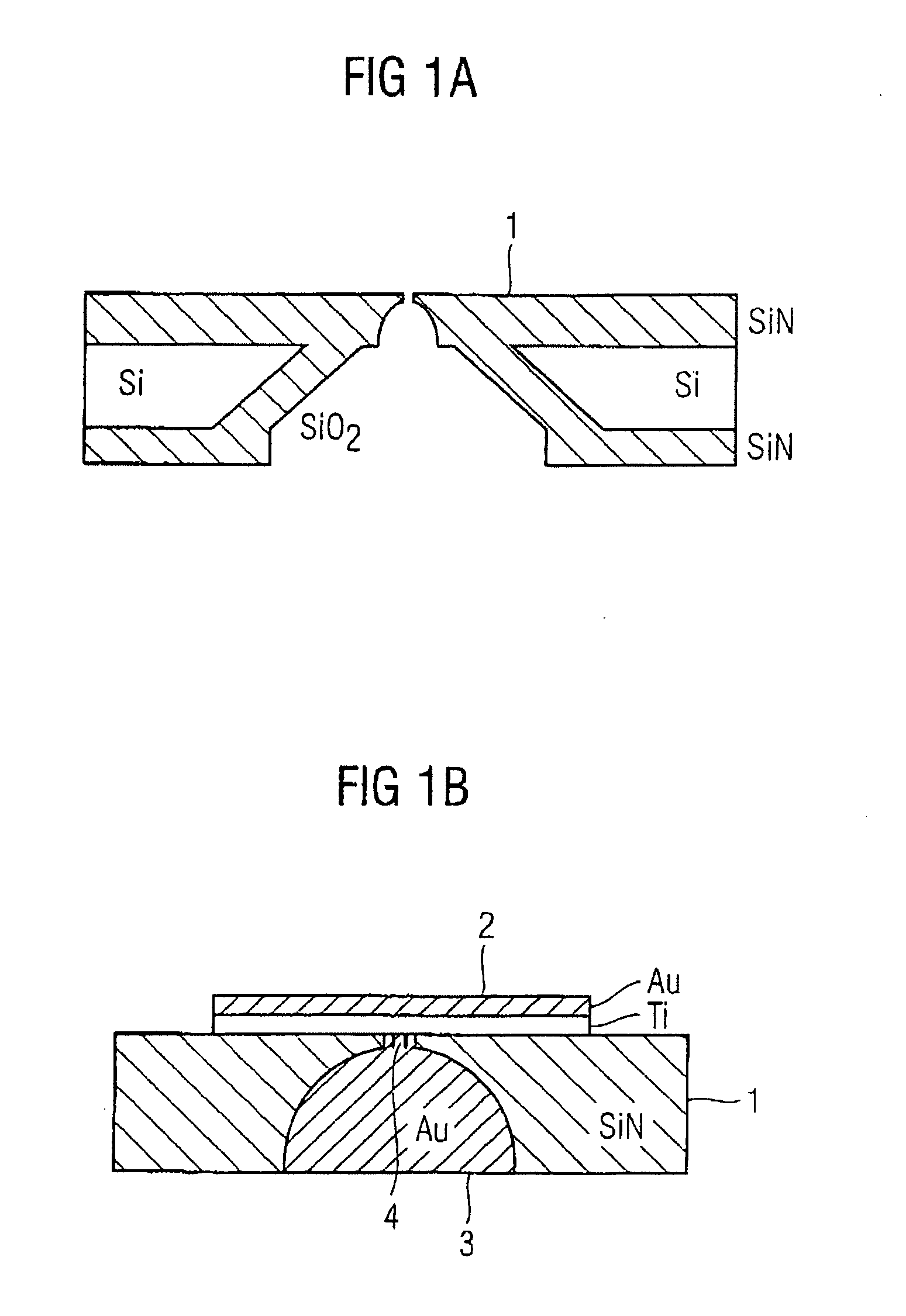Method for fabricating a nonvolatile memory element and a nonvolatile memory element
a nonvolatile memory and memory element technology, applied in the direction of electrical devices, semiconductor devices, material nanotechnology, etc., can solve the problems of scaling limits, compatibility of process, adhesion or chemical binding of organic molecule on substrate, etc., to achieve precise patterning, reduce power consumption, and reduce the effect of memory spa
- Summary
- Abstract
- Description
- Claims
- Application Information
AI Technical Summary
Benefits of technology
Problems solved by technology
Method used
Image
Examples
example
[0047] A silicon electrode structure is fabricated on the basis of SOI technology. For this purpose, an oxidized silicon wafer is pressed together with an elemental silicon wafer at high pressure and high temperature and the silicon wafer side is subsequently thinned by means of chemical mechanical polishing (CMP). The silicon tracks are etched by means of currently used silicon etching techniques, such as, e.g. dry etching by means of reactive plasma etching on the basis of HBr and O2 or SF5. A copolymer comprising polynorbornene and poly(norbornene dicarboxylic acid) is subsequently prepared. After the copolymer has been dried it is dissolved again and the stoichiometric amount of SiCl4 dissolved in THF is then added. This solution is applied to the silicon substrate. In this case, the layer grows in a hexagonally ordered manner in a self-assembled process. The silicon salt is converted into silicon oxide by ammonium hydroxide. The copolymer is subsequently removed by plasma ashin...
PUM
 Login to View More
Login to View More Abstract
Description
Claims
Application Information
 Login to View More
Login to View More - R&D
- Intellectual Property
- Life Sciences
- Materials
- Tech Scout
- Unparalleled Data Quality
- Higher Quality Content
- 60% Fewer Hallucinations
Browse by: Latest US Patents, China's latest patents, Technical Efficacy Thesaurus, Application Domain, Technology Topic, Popular Technical Reports.
© 2025 PatSnap. All rights reserved.Legal|Privacy policy|Modern Slavery Act Transparency Statement|Sitemap|About US| Contact US: help@patsnap.com



